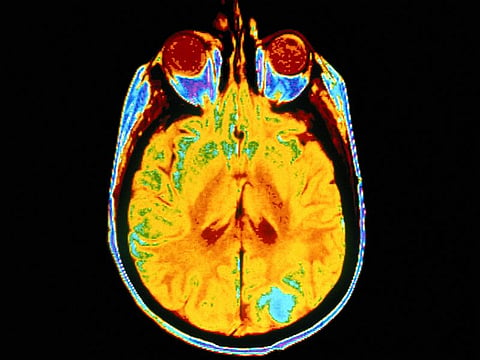WEDNESDAY, Sept. 7, 2016 (HealthDay News) -- In symptomatic carotid artery disease (CAD), subcortical white matter ischemic lesion locations and severity of ultrastructural tract damage contribute to cognitive impairment, according to a study published online Sept. 6 in Radiology.
Dewen Meng, from the University of Nottingham in the United Kingdom, and colleagues enrolled 108 patients with symptomatic CAD but no dementia. After controlling for age, associations between cognition, medial temporal lobe atrophy (MTA), lesion volumes, and global white matter ultrastructural damage were tested.
The researchers found that, compared with nonimpaired patients, cognitively impaired patients (49.1 percent) who were classified as having probable vascular cognitive disorder were older and had more frequent MTA, cortical infarctions, and larger volumes of acute and chronic subcortical ischemic lesions. There was no correlation for lesion volume with global cognitive performance; however, there was a correlation for cognitive performance with presence of chronic ischemic lesions within the interhemispheric tracts and thalamic radiation. Skeleton mean diffusivity was most closely correlated with cognition and had promising diagnostic accuracy for vascular cognitive disorder. In subjects with a low risk of preclinical Alzheimer's disease indexed by the absence of MTA, findings were confirmed.
"Subcortical white matter ischemic lesion locations and severity of ultrastructural tract damage contribute to cognitive impairment in symptomatic CAD, which suggests that subcortical disconnection within large-scale cognitive neural networks is a key mechanism of vascular cognitive disorder," the authors write.
Abstract
Full Text


